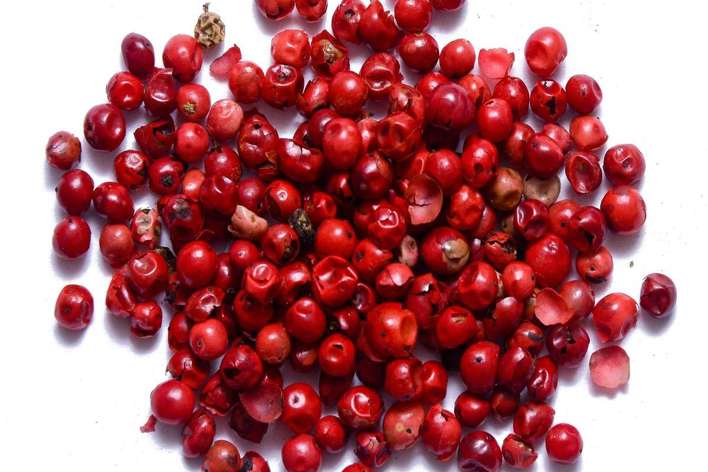
Dried berry of the shrub Schinus molle, commonly known as the Peruvian peppertree
Ingredients/Health Benefits
Anthocyanins are the pigments that provide coloring in red, blue and purple plants and act as antioxidants and can have other effects, including anti-inflammatory and antiviral benefits.
Bioflavonoids is a class of phenolic compounds found in citrus fruits and in green tea and like the anthocyanins above, they are effective antioxidants that are useful for protecting the body from damage by free radicals.
Gallic acid is a powerful antioxidant and has antibacterial and antiviral benefits as well.
Pink peppercorns are rich in dietary fibre. A 100 g serving can provide 33 g of fibre, which is 3 g more than the daily recommended intake for adults.
In Brazil, practitioners of traditional medicine have used the pink peppercorn plant to provide relief from respiratory conditions including bronchitis. The peppercorns themselves are also used for treating bacterial infections and colds.
There is significant evidence that anthocyanins like those found in pink peppercorns are able to fight various types of cancer including breast, prostate and colon cancer. Studies show that they are able to prevent metastasis in breast cancer and even prevent prostate tumour cells from forming in the first place.
There is some evidence that gallic acid can cause pancreatic cells to release insulin and help control diabetes.
Usage
The pink peppercorn spice can be used as a substitute for regular black pepper; it can also be added to black pepper to enhance the look of a dish.
Pink peppercorns are used mainly because of their appearance. They stand out in light cream sauces and seafood dishes. They are also popular for use in vinaigrettes and other salad dressings.
Craft beer makers use them as a flavoring additive for beer.
